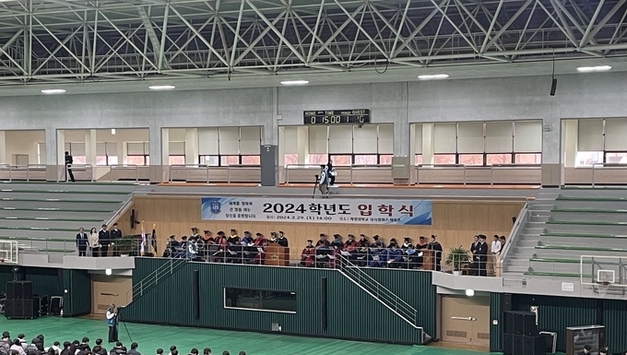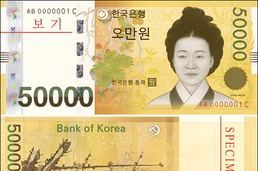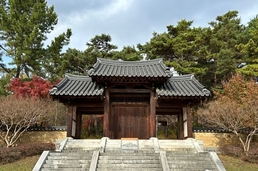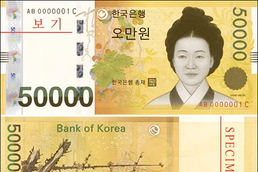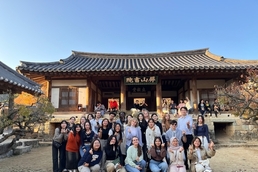Cover Story
Restored Jejoongwon Preserves 125 Years of History
On June 14, a ceremony was held to commem orate the restoration of Jejoongwon to its original state. Jejoongwon, which means “house of relief and treatment for the suffering populace,” was the first Western-style modern hospital in the Yeong nam region and is the predecessor of Keimyung University Dongsan Medical Center. To com memorate the 125th anniversary of the univer sity’s founding, the restoration project for the original Daegu Jejoongwon began in February 2023 and was completed in May this year, as a tribute to this historical starting point. The name “Jejoongwon,” was first used by Emperor Gojong of the Korean Empire in Seoul for a Western-style hospital. American mission aries established hospitals in Seoul, Daegu, and Pyongyang, all under the name Jejoongwon, re flecting the close connection between these hos pitals and the spread of Christianity. In 1899, before opening Jejoongwon, Dr. Woodbridge O. Johnson, the first medical mis sionary sent to Daegu by the Northern Presbyte rian Church of the U.S., operated a small “American Pharmacy” in the courtyard of Nam munan Church, selling medicines. At that time, diseases like tuberculosis, malaria, leprosy, and various parasitic infections were rampant in Daegu. The official start of medical services under the sign of the “American Pharmacy” in late De cember 1899 marked the birth of Jejoongwon, the first modern medical institution in Daegu, and the forerunner of Dongsan Medical Center. Dr. Johnson, who was also known by various Korean names such as Jang Incha, Jang Uisa, and Jang Orin, served as the first director of Jejoong won from 1899 to 1910. Many of his patients gradually converted to Christianity; a Buddhist monk became a Christian, Korea’s first cataract surgery patient decided to follow Jesus, and even a notorious thief accepted the gospel, marking the beginning of the Christian faith in the region. Jejoongwon was located inside the fortified walls of Daegu, where poor ventilation, low ceil ings, and cramped conditions made it difficult to work, especially during the hot summers. Dr. Johnson lamented, “It was so small and stifling that doctors had to risk their health just to work there.” The missionaries described their discom fort with the “3Ss”: Smell, Smoke, and Sound. The foul smell came from the Dalseocheon stream, which flowed near the missionary resi dence, carrying debris and trash during the sum mer monsoon season. The smoke resulted from the wood-fired cooking in every household, filling the enclosed area with smoke every morning and evening. Lastly, the constant noise from barking dogs, women pounding laundry, and shamans performing rituals made the environment chal lenging for the missionaries. In 1906, Dr. Johnson moved Jejoongwon to its current location in Dongsan-dong. From 1911, under the leadership of Dr. Fletcher, the second director, the hospital became known as Dongsan Medical Center. Despite the hardships of the Japanese colonial period, the hospital grew into a general hospital, pioneering scientific diagnosis and treatment. In 1924, it established a nursing school, which has since evolved into Keimyung University’s College of Nursing, contributing to the development of nursing education in Korea. Following the Korean War, Dongsan Medical Center established Korea’s first children’s hospi tal, providing free care for war orphans and be coming widely recognized across the nation. The seventh director, Dr. Moffett, who served for 46 years, modernized the hospital with new facilities and advanced medical equipment. In the 1960s and 70s, Dongsan Medical Center made signifi cant strides in medical technology. In 1980, it merged with Keimyung University, leading to the establishment of the Keimyung University School of Medicine in 1982, transforming into one of Korea’s leading institutions combining medical treatment, education, and research. Looking toward the next 100 years, Keimyung University Dongsan Medical Center has con structed a new hospital building with 20 floors above ground and 5 floors underground, accom modating 1,041 beds. Modeled after eight leading hospitals in the United States, including Johns Hopkins Hospital, the new facility was designed with a “patient-first” philosophy and was com pleted on April 15, 2019. It has been certified as an eco-friendly building (LEED) and features state-of-the-art intelligent building systems, mak ing it a representative medical institution of Daegu. Jejoongwon marks the beginning of modern medical history in Daegu, playing a pivotal role in the modernization of society, economy, culture, and education in the region. It is reported that over 1,700 patients were treated by the summer of the year following its establishment during the late Joseon period when surgical procedures and in fectious disease treatments were still underdevel oped. Jejoongwon also contributed to regional medical advancements through successful small pox vaccinations and cesarean sections. The re stored Jejoongwon on Cheongna Hill is expected to serve as a new historical and cultural space in the region.
자세히보기




